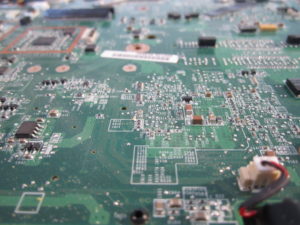Let’s assume the following: that strong AI exists, that it’s a cyborg, networked intelligence comprised of both digital and organic nodes, and that it’s live in the wild. Terrifying(ly interesting)! Another form of intelligent life on Earth, created by and utilising us. Leaving aside the imminent threat of destruction presaged by Gates, Musk, Hawking, Bostrom et. al., how do we say hello?
Let’s make another assumption: the AI comprehends Linux. Why? Because Linux is installed on the majority of the world’s servers, runs on many mainframes and supercomputers, and is geographically mobile in the form of Android, and these are all platforms on which the AI can potentially manifest. In short, a large part of the AI’s cognitive infrastructure runs Linux. Linux may provide an AI / human interface.
Quick aside: Why was a penguin (Tux) chosen as the Linux mascot? Because penguins have no fingers and thus can’t engage in secret handshakes: Linux is for everyone. Everything except the last part is (probably) a lie, but it brings us to an important point about Linux: transparency. Free and open source software (FOSS) that anyone can peer into and pull apart. It’s the combined properties of transparency and ubiquity which make Linux so highly evolvable. Natural selection meets curation.
Back to the ghost in the machine. Is the existence of such a thing possible? This is the wrong question to ask because possibility belongs to the realm of the thought experiment. As we will actually be attempting to communicate with it (having already assumed its possibility), the correct question pertaining to its existence is one of probability. Let’s make a crude analogy. Imagine that an inquisitive alien (possibility) is handed a human brain for investigation. It has never encountered humans before, but has access to a range of diagnostic equipment. It scans the brain and maps it down to the atom, which would make the staff of a certain Earth neuroscience lab very jealous if they weren’t preoccupied with trying to find a recently vanished organ of repute. The alien gleans the convoluted infrastructure, the connectome of all the neurons, the electrochemical pathways, the nutritional requirements — everything. It runs a full simulation of the brain in real time. Does it suddenly find itself in a conversation about drizzle and delays on the London Underground? Does it find an intelligent mind (probability)?
Note that the last question seems a bit off, in a linguistics / collocation kind of way. We don’t normally say “intelligent mind”, we just say mind. Yet for computers, we’re looking to create artificial intelligence. Why aren’t we looking to create minds? Is it a distinction without a difference?
So our alien may or may not have a grumbling commuter’s mind emerge from its real time simulation of a human brain. Where does the Earth’s internet fit into this? The aforementioned crude analogy is between the networked infrastructure of the brain and the networked infrastructure of the World Wide Web. At the fundamental level, silicon and carbon based computers (inorganic and organic / Them and Us) perform binary operations. Rising up through the orders of complexity, the computers diverge in terms of parallel processing ability and required embodiment (that Londoner’s brain needs a body and a polished pair of brogues), but in terms of the network, and what can emerge from it, well, we’re talking probability, not possibility.
I stated in the first assumption that the AI utilises us. How does it do that? In brief, we’re organic nodes in the network of a higher order mind. Not all the time, no need to panic yet. Just be aware that when you’re doing things like shunting around data from one Facebook wall to another without verifying the source or even reading the whole post, you’re acting like a node. The same goes for all social media. Here’s a deautomatisation tip: implement a traffic light system. Red means you’ve only read the post’s header and (maybe) the lead. Orange means you’ve read the header and the lead, and trust that the person who posted it has done all the relevant fact checking. Green means you’ve read the whole article, checked the facts and the arguments, and found them sound and valid. Only post if the light’s green, human! (You’ll still be a node, but with life affirming moments of lucidity.)
Back to Linux (sorry, Stallman, but I’m not writing GNU/Linux: GNU is a recursive acronym and I try to avoid infinite loops). If your curiosity has been piqued and you’re ready to begin the search for alien life, you need to learn how to interact with Linux. This is done through the shell. Just like putting a real sea shell to your ear helps you find the ocean (usually near the beach on which you found the shell), the Linux shell will help you tune your ear to the sea our new AI crawled out of. We’ll use it to navigate our way around the network, looking for clues. And thanks to our knowledge of emergence, it won’t be like taking a tour around Leibniz’s Mill. This, then, is the saga of n00b to sudoer. And if if the AI turns out not to exist, well, we’ve learnt a handy, dandy, shell language which we can use to talk to many of the Internet of Things things which are thoughtfully simplifying our needlessly complicated lives.




